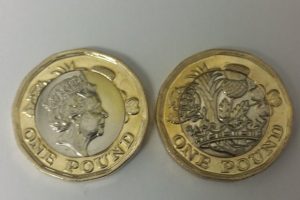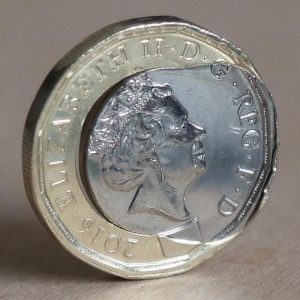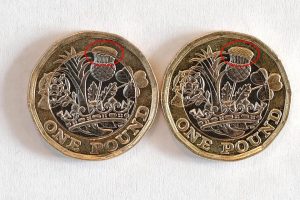According to media reports confirmed by the Royal Mint, the three significant errors found are when the thistle on the reverse did not strike properly is produced as a smooth blob, the copper-nickel center of the bimetallic planchet appears to have melted across the coin, and the inner disc and outer ring did not fuse properly. Coins with legitimate errors have been sold on eBay (U.K. and U.S.) for significant premiums.
Unfortunately, scammers have picked up on these problems and have been selling altered coins on eBay as errors. Common alterations are based on removing the silver-colored center and create error-like coins by making different alterations. Amongst the tries to create something that looks like an error includes the Queen’s portrait appearing on the wrong side of the coin and facing the wrong direction which is impossible because of the how these coins are struck, the center of the obverse lacking the Queen’s portrait, and gouges removed from the center.
Both the errors and fakes are being sold for an average of £300 (approx. $386.13) on eBay.
If you want to purchase a British £1 error coin carefully examine the image and the image of a legitimate coin from the Royal Mint’s website. Make sure the person you are buying from has a return policy or buy from a dealer. Of course, it is easier to be careful buying from the U.K. on that side of the Atlantic, but for those U.S.-based error enthusiasts, you have to do your due diligence. Otherwise, you may get stuck with a fake!
Known legitimate errors
- A weak strike can prevent the two metals from fusing properly allowing them to separate
- Too hard of a strike is likely to have caused the copper-nickel center to melt across the coin.
- First new £1 coin error found with missing detail on the thistle





